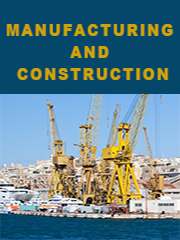TOP CATEGORY: Chemicals & Materials | Life Sciences | Banking & Finance | ICT Media

Download Report PDF Instantly
Report overview
Air Separation Plant is the equipment used in the separation of the air, which is used to produce the oxygen, nitrogen, etc. Air separation plants produce one or both of the two most common atmospheric industrial gases (nitrogen and oxygen) as gases and sometimes also as liquid products. Some air separation plants also produce compressed dry air, argon, ultra high purity (UHP) oxygen, or, occasionally, the "rare gases" (neon, krypton and xenon).
This report aims to provide a comprehensive presentation of the global market for Air Separation Plant, with both quantitative and qualitative analysis, to help readers develop business/growth strategies, assess the market competitive situation, analyze their position in the current marketplace, and make informed business decisions regarding Air Separation Plant. This report contains market size and forecasts of Air Separation Plant in global, including the following market information:
The global Air Separation Plant market was valued at US$ 4323.6 million in 2022 and is projected to reach US$ 5808 million by 2029, at a CAGR of 4.3% during the forecast period. The influence of COVID-19 and the Russia-Ukraine War were considered while estimating market sizes.
Global Air Separation Plant key players include Linde, Air Liquide, Praxair, Air Products, Hangyang Group, etc. Global top five manufacturers hold a share about 50%. Europe is the largest market, with a share about 35%, followed by North America and China, both with a share about 25 percent. In terms of product, 20-60 K CMPH is the largest segment, with a share about 55%. And in terms of application, the largest application is Chemical Industry, followed by Industry Gas, Metallurgy Industry, etc.
We surveyed the Air Separation Plant manufacturers, suppliers, distributors and industry experts on this industry, involving the sales, revenue, demand, price change, product type, recent development and plan, industry trends, drivers, challenges, obstacles, and potential risks.
Total Market by Segment:
Global Air Separation Plant Market, by Type, 2018-2023, 2024-2029 ($ Millions) & (K CMPH)
Global Air Separation Plant Market Segment Percentages, by Type, 2022 (%)
Global Air Separation Plant Market, by Application, 2018-2023, 2024-2029 ($ Millions) & (K CMPH)
Global Air Separation Plant Market Segment Percentages, by Application, 2022 (%)
Global Air Separation Plant Market, By Region and Country, 2018-2023, 2024-2029 ($ Millions) & (K CMPH)
Global Air Separation Plant Market Segment Percentages, By Region and Country, 2022 (%)
Competitor Analysis
The report also provides analysis of leading market participants including:
Key companies Air Separation Plant revenues in global market, 2018-2023 (Estimated), ($ millions)
Key companies Air Separation Plant revenues share in global market, 2022 (%)
Key companies Air Separation Plant sales in global market, 2018-2023 (Estimated), (K CMPH)
Key companies Air Separation Plant sales share in global market, 2022 (%)
Further, the report presents profiles of competitors in the market, key players include:
Outline of Major Chapters: